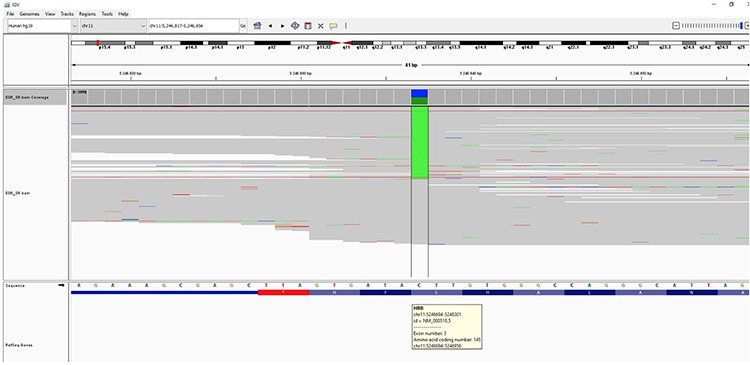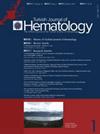土耳其家庭中的Hb Andrew Minneapolis变体
IF 1.5
4区 医学
Q3 HEMATOLOGY
Turkish Journal of Hematology
Pub Date : 2023-08-31
Epub Date: 2023-07-31
DOI:10.4274/tjh.galenos.2023.2023-0239
引用次数: 0
摘要
本文章由计算机程序翻译,如有差异,请以英文原文为准。

Hb Andrew-Minneapolis Variant in a Turkish Family
There are a total of 1864 known structural hemoglobin (Hb) variants [1] and Hb Andrew-Minneapolis is a rare variant. Hb Andrew-Minneapolis is a beta-chain variant of hemoglobin, which is formed with the replacement of lysine at position 144 with asparagine (HGVS name: HBB:c.435G>C, beta 144(HC1) Lys>Asn), and it was first identified in 1973 by Zak et al. [2]. This variant is inherited in an autosomal dominant manner [2,3]. The first case in Türkiye was published by Aykut et al. [4]. Here we present the Hb Andrew-Minneapolis variant in two siblings whose parents were not alive.
求助全文
通过发布文献求助,成功后即可免费获取论文全文。
去求助
来源期刊

Turkish Journal of Hematology
HEMATOLOGY-
CiteScore
2.90
自引率
3.80%
发文量
45
审稿时长
1 months
期刊介绍:
The Turkish Journal of Hematology is published quarterly (March, June, September, and December) by the Turkish Society of Hematology. It is an independent, non-profit peer-reviewed international English-language periodical encompassing subjects relevant to hematology.
The Editorial Board of The Turkish Journal of Hematology adheres to the principles of the World Association of Medical Editors (WAME), International Council of Medical Journal Editors (ICMJE), Committee on Publication Ethics (COPE), Consolidated Standards of Reporting Trials (CONSORT) and Strengthening the Reporting of Observational Studies in Epidemiology (STROBE).
The aim of The Turkish Journal of Hematology is to publish original hematological research of the highest scientific quality and clinical relevance. Additionally, educational material, reviews on basic developments, editorial short notes, images in hematology, and letters from hematology specialists and clinicians covering their experience and comments on hematology and related medical fields as well as social subjects are published. As of December 2015, The Turkish Journal of Hematology does not accept case reports. Important new findings or data about interesting hematological cases may be submitted as a brief report.
 求助内容:
求助内容: 应助结果提醒方式:
应助结果提醒方式:


